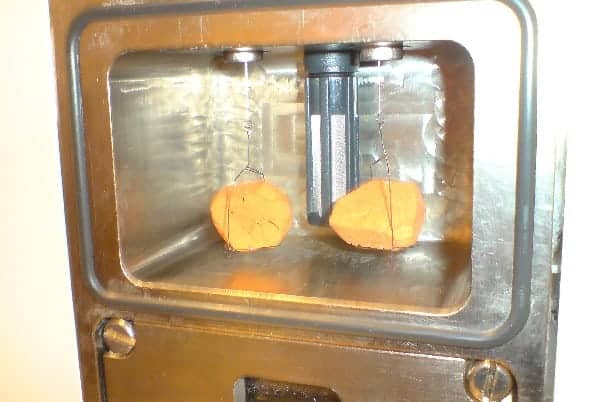In the realm of archaeology, the tantalizing quest to date ancient artifacts reflects an intrinsic longing to connect with the past. The act of dating, especially through the lens of re-firing ancient pottery, intertwines the disciplines of physics and history, crafting a narrative that is as captivating as it is scientifically rigorous. Just as a chef might return to a recipe to refine and rediscover flavors, scientists utilize the complex interplay of physical principles to yield insights into the temporal origins of ceramic artifacts.
The practice of dating ancient pottery is inherently linked to the processes involved in kiln firing. When clay is molded and subsequently heated, transformative changes occur at the molecular level. The temperatures reached during firing alter the physical and chemical properties of the pottery, creating a hardened vessel emblematic of a specific time and place. This behavioral metamorphosis provides a unique opportunity: by understanding the thermodynamic variables involved in the firing process, one can glean clues that assist in pinpointing the chronological framework of the artifact.
One of the pivotal techniques employed in this context is thermoluminescence dating (TL), a method that hinges on the interactions of minerals in the pottery with ionizing radiation. When clay is subjected to heat, especially during its initial firing, electrons in the crystalline structure of certain minerals become entrapped. As the item ages, these electrons accumulate, yearning for release. Only when the pottery is re-fired do the trapped electrons escape, emitting a measurable light in the process known as luminescence. The intensity of this emitted light can be correlated to the time elapsed since the last heating event, effectively allowing researchers to date the ceramic object with remarkable precision.
Notably, this methodology transcends mere technique and enters the realm of narrative crafting. Each piece of pottery serves as a silent witness to the sociocultural dynamics of its time. The artifacts—fragments of everyday life—tell stories of agricultural practices, trade routes, and artistic expression. By employing TL dating, scholars dive deep into the annals of human experience, unveiling narratives that would otherwise remain cloaked in silence.
Moreover, to foster a more comprehensive understanding of ancient pottery, one must consider the role of the firing technology utilized by past civilizations. The technological advancements in kiln construction and heating techniques are vital conduits for illuminating the evolution of societies. Early kilns, often rudimentary and varied, produced ceramics with distinctive characteristics that can be traced back to particular epochs. Understanding these differences not only aids in establishing a chronology but also ignites inquiries into how cultural practices influenced technological developments.
Additionally, cross-disciplinary collaboration between physicists, archaeologists, and historians enriches the process of pottery dating. Physicists provide insights into the fundamental principles governing thermal properties and radioactivity, while archaeologists contextualize the findings within the broader spectrum of historical events. This synergistic approach creates a rich tapestry of knowledge that transcends disciplinary boundaries, enhancing our collective understanding of civilization’s past.
The use of re-firing as a means to unlock temporal secrets also invites consideration of ethical implications. As each ancient pot is subjected to a second firing, one must weigh the need for knowledge against the potential risks of damaging an artifact. Hence, the philosophy of conservation intersects with empirical investigation. Decisions must be made judiciously, balancing the thirst for scientific inquiry with the imperative to preserve the integrity of cultural heritage.
Furthermore, the exploration of the physicochemical properties of ancient pottery extends beyond mere dating. Advanced techniques such as X-ray diffraction and scanning electron microscopy allow researchers to analyze the composition of ceramic materials. This scientific scrutiny unravels the constituents of clay and additives utilized during the pottery-making process, revealing trade networks and cultural exchanges. The complex interplay of raw materials speaks volumes about the interconnectivity of ancient peoples, their resource utilization, and social structures.
As scientists delve deeper into the vocation of pottery analysis, it is compelling to reflect upon the broader implications of their findings. Each dated pot serves as a microcosm of human history, encapsulating the zeitgeist of its era. The artifacts are not mere objects; they represent the dreams, challenges, and daily lives of individuals long forgotten. Thus, the scientific quest for dating ancient pottery emerges as a vital endeavor—each artifact, akin to a time capsule, offers invaluable insights into human behavior and societal development across millennia.
In conclusion, the intersection of physics and archaeology through the lens of re-firing ancient pots presents an extraordinary narrative that transcends temporal boundaries. By harnessing the laws of thermodynamics and radioactive decay, researchers unlock the secrets of the past, bridging the gap between modernity and antiquity. It embodies a saga of discovery, offering a window into the lives of those who came before us. The melding of science, history, and ethics in this pursuit beautifully emphasizes our collective journey, ensuring that the stories of the silent artifacts continue to resonate through the ages.










